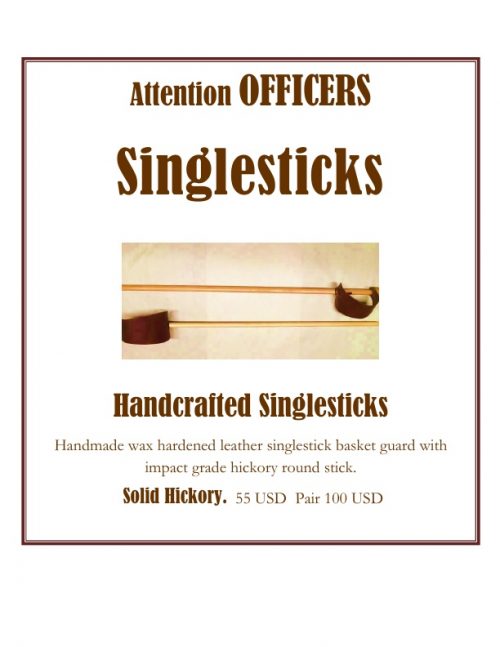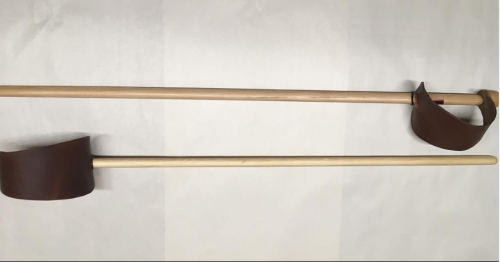-
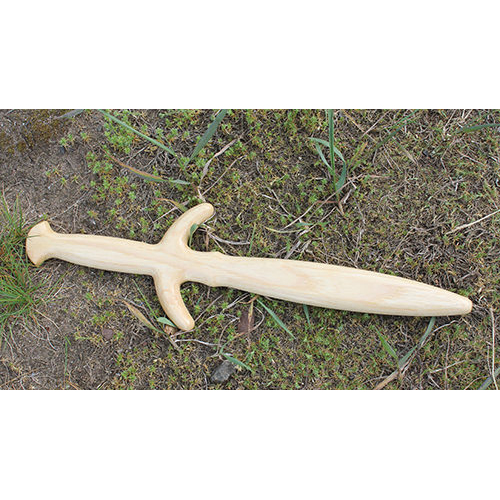 Length: Overall 15, Blade 10”, Handle 3.5 “, ¾” thick A dagger is a knife fighting weapon with a very sharp point designed or capable of being used as a thrusting or stabbing weapon.[1][2] The design dates to human prehistory, and daggers have been used throughout human experience to the modern day in close combat confrontations.
Length: Overall 15, Blade 10”, Handle 3.5 “, ¾” thick A dagger is a knife fighting weapon with a very sharp point designed or capable of being used as a thrusting or stabbing weapon.[1][2] The design dates to human prehistory, and daggers have been used throughout human experience to the modern day in close combat confrontations. -
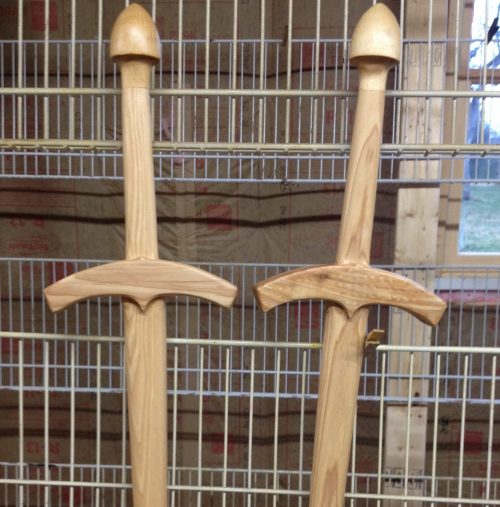 Our sparring dagger or parrying dagger is a category of small handheld weapons from the European late Middle Ages and early Renaissance. These weapons were used as off-hand weapons in conjunction with a single-handed sword. As the name implies they were designed to parry, or defend, more effectively than a simple dagger form, typically incorporating a wider guard, and often some other defensive features to better protect the hand as well.
Our sparring dagger or parrying dagger is a category of small handheld weapons from the European late Middle Ages and early Renaissance. These weapons were used as off-hand weapons in conjunction with a single-handed sword. As the name implies they were designed to parry, or defend, more effectively than a simple dagger form, typically incorporating a wider guard, and often some other defensive features to better protect the hand as well. -
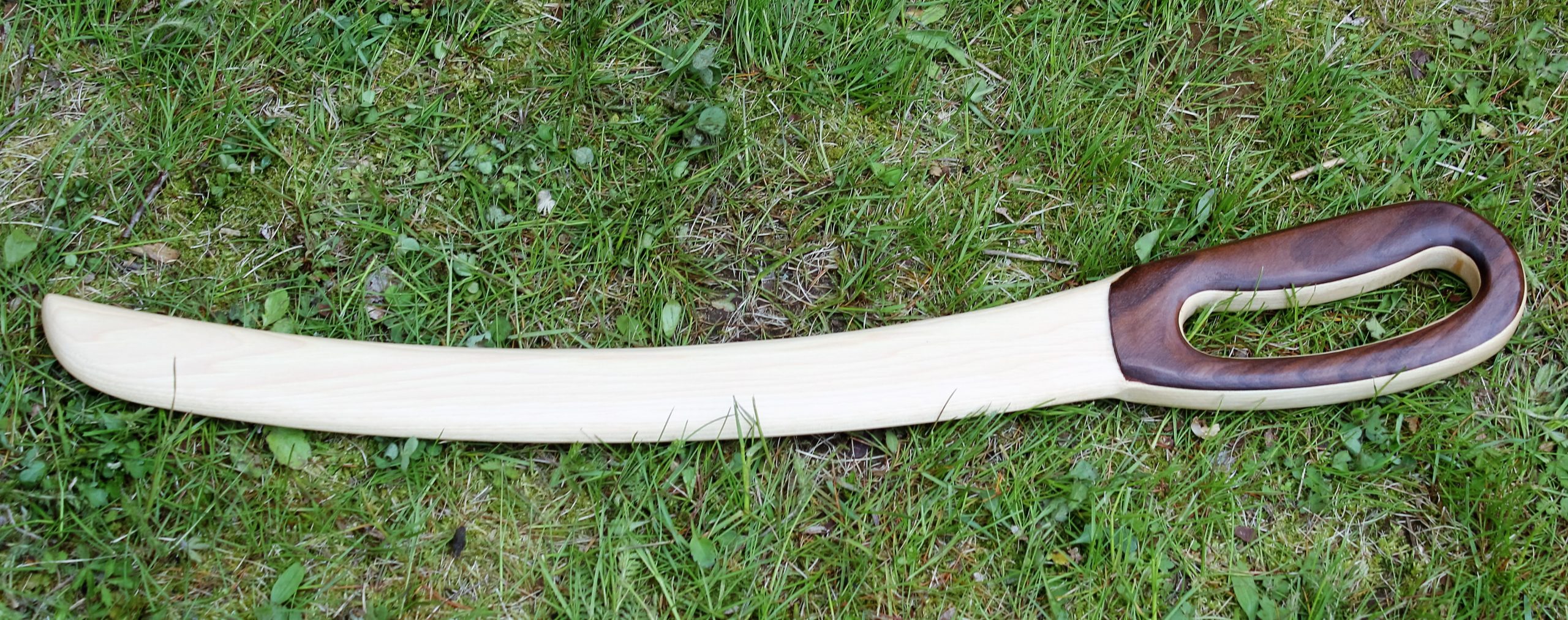 Length: Overall 26”, Blade 20”, Handle 6” Czech tusk (Dussack) – specific weapon for Czech very common for farmers, artisans, etc. Originates from the Husitian wars in Czech in the first half of the 15th century. Later the style evolved into a wooden version used for training. Pictured is a Dussak with black walnut trim on the handle, optional.
Length: Overall 26”, Blade 20”, Handle 6” Czech tusk (Dussack) – specific weapon for Czech very common for farmers, artisans, etc. Originates from the Husitian wars in Czech in the first half of the 15th century. Later the style evolved into a wooden version used for training. Pictured is a Dussak with black walnut trim on the handle, optional. -
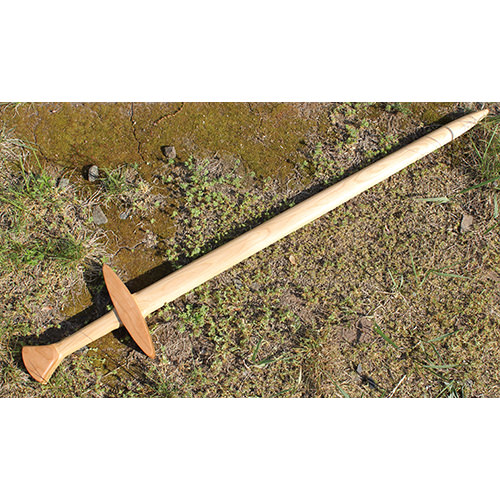 Length: Overall 33.5”, Blade 25.5”, Handle 4” This is an Intermedial-level sword, appropriate for younger or less experienced swordspeople. Initially, squires were a knight’s trainees/apprentices. A knight typically took his squire into battle and gave him a chance to prove himself. If he proved his loyalty and skill in battle, he would have a “dubbing”, an official ceremony that made him a knight. Great for a first sword, the squire sword helps to improve arm strength and technique.
Length: Overall 33.5”, Blade 25.5”, Handle 4” This is an Intermedial-level sword, appropriate for younger or less experienced swordspeople. Initially, squires were a knight’s trainees/apprentices. A knight typically took his squire into battle and gave him a chance to prove himself. If he proved his loyalty and skill in battle, he would have a “dubbing”, an official ceremony that made him a knight. Great for a first sword, the squire sword helps to improve arm strength and technique. -
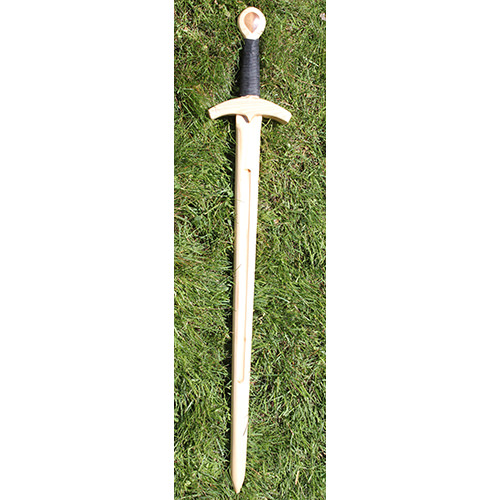 This is an Intermedial-level sword, appropriate for younger or less experienced swordspeople. A sword with a broad blade and usually two lethal cutting edges. The Broadsword was used to cut rather than stab. The Normans (also called Northmen or Norsemen) were the descendants of the Scandinavian Vikings who raided the European coastal settlements at the outset of the 8th century. Despite the Norman's conversion to Christianity and their adoption of Frankish way of life, the Normans retained many of the traits of their Germanic ancestors.
This is an Intermedial-level sword, appropriate for younger or less experienced swordspeople. A sword with a broad blade and usually two lethal cutting edges. The Broadsword was used to cut rather than stab. The Normans (also called Northmen or Norsemen) were the descendants of the Scandinavian Vikings who raided the European coastal settlements at the outset of the 8th century. Despite the Norman's conversion to Christianity and their adoption of Frankish way of life, the Normans retained many of the traits of their Germanic ancestors. -
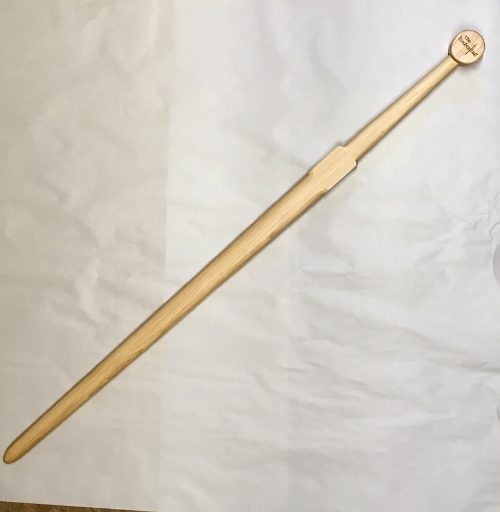
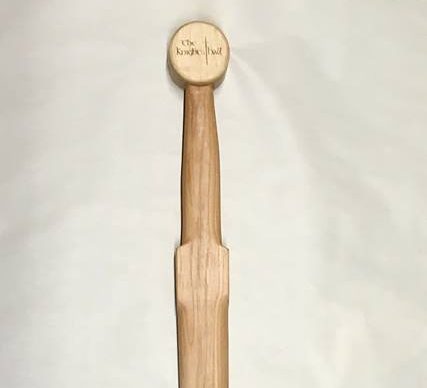 The Knights Hall Armored Combat Training Systems Kit: The Waster / Pell Trainer Hickory arming sword trainer with The Knights Hall lasered on the pommel. Arming Sword overall length is .34.5". The pell trainer is available as the arming sword, longsword, falchion, and great sword.
The Knights Hall Armored Combat Training Systems Kit: The Waster / Pell Trainer Hickory arming sword trainer with The Knights Hall lasered on the pommel. Arming Sword overall length is .34.5". The pell trainer is available as the arming sword, longsword, falchion, and great sword. -

 The Knights Hall Armored Combat Training Systems Kit: The Waster / Pell Trainer Hickory Longsword trainer with The Knights Hall lasered on the pommel. Longsword overall length is 47". The pell trainer is available as the arming sword, longsword, falchion, and great sword.
The Knights Hall Armored Combat Training Systems Kit: The Waster / Pell Trainer Hickory Longsword trainer with The Knights Hall lasered on the pommel. Longsword overall length is 47". The pell trainer is available as the arming sword, longsword, falchion, and great sword. -
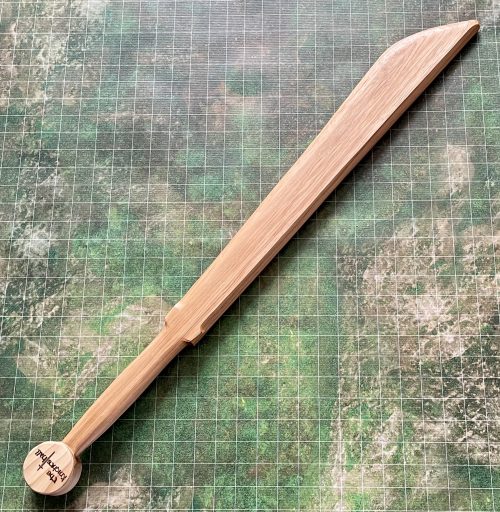
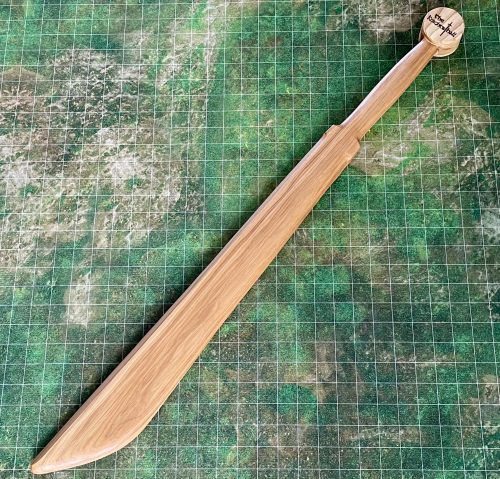 The Knights Hall Armored Combat Training Systems Kit: The Waster / Pell Trainer Hickory Falchion sword trainer with The Knights Hall lasered on the pommel. Falchion overall length is 34". The pell trainer is available as the arming sword, longsword, falchion, and great sword.
The Knights Hall Armored Combat Training Systems Kit: The Waster / Pell Trainer Hickory Falchion sword trainer with The Knights Hall lasered on the pommel. Falchion overall length is 34". The pell trainer is available as the arming sword, longsword, falchion, and great sword. -
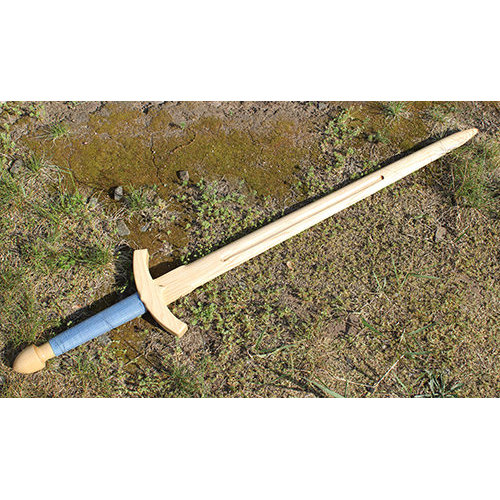 Length: Overall - 38.5", Blade - 28", Handle - 6.75" This is an Intermediate-level sword, appropriate for younger or less experienced swordspeople. The archer’s primary weapon was the bow and arrow, but what did an archer turn to when the enemy closed and tried to engage the archer in melee combat? In such a situation, the archer typically favored a short sword, just like this one, something lighter than a full-sized blade, but effective against a more heavily armed and armored foe.
Length: Overall - 38.5", Blade - 28", Handle - 6.75" This is an Intermediate-level sword, appropriate for younger or less experienced swordspeople. The archer’s primary weapon was the bow and arrow, but what did an archer turn to when the enemy closed and tried to engage the archer in melee combat? In such a situation, the archer typically favored a short sword, just like this one, something lighter than a full-sized blade, but effective against a more heavily armed and armored foe. -
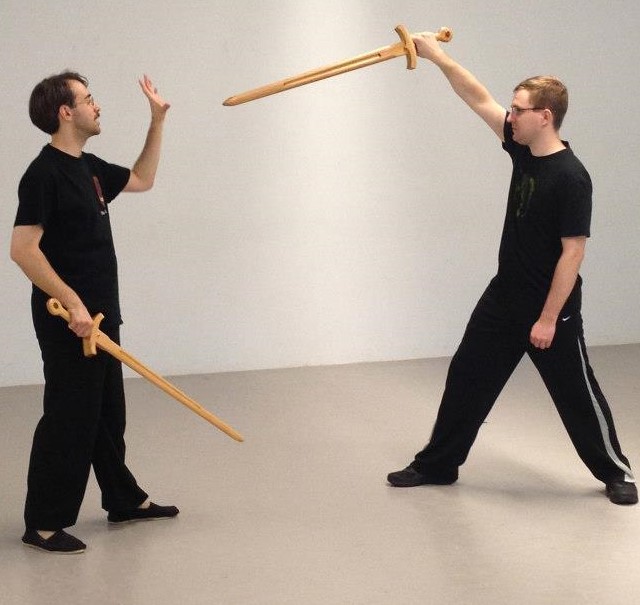
 Length: Overall 40”, Blade 31”, Handle 5” A sword with a broad blade and usually two lethal cutting edges. The Broadsword was used to cut rather than stab. The Normans (also called Northmen or Norsemen) were the descendants of the Scandinavian Vikings who raided the European coastal settlements at the outset of the 8th century. Despite the Norman's conversion to Christianity and their adoption of Frankish way of life, the Normans retained many of the traits of their Germanic ancestors.
Length: Overall 40”, Blade 31”, Handle 5” A sword with a broad blade and usually two lethal cutting edges. The Broadsword was used to cut rather than stab. The Normans (also called Northmen or Norsemen) were the descendants of the Scandinavian Vikings who raided the European coastal settlements at the outset of the 8th century. Despite the Norman's conversion to Christianity and their adoption of Frankish way of life, the Normans retained many of the traits of their Germanic ancestors. -
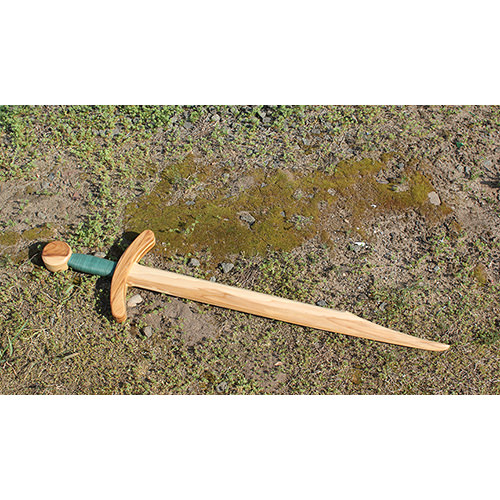 Length: Overall 36”, Blade 29”, Handle 6” The German Gross Messer had a reputation for being a huge and imposing battle ready sword. Gross Messers (German for “Great Knife”) are a Renaissance creation originating around the 15th century. With the need of swords serving both military and civilian life, the messer became a utility tool for daily activity, hunting, self-protection and war.
Length: Overall 36”, Blade 29”, Handle 6” The German Gross Messer had a reputation for being a huge and imposing battle ready sword. Gross Messers (German for “Great Knife”) are a Renaissance creation originating around the 15th century. With the need of swords serving both military and civilian life, the messer became a utility tool for daily activity, hunting, self-protection and war.

